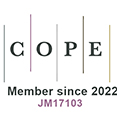REFERENCES
1. Davis, E.; Marcus, G. Commonsense reasoning and commonsense knowledge in artificial intelligence. Commun. ACM. 2015, 58, 92-103.
2. Zhang, S.; Rudinger, R.; Duh, K.; Van Durme, B. Ordinal common-sense Inference. Trans. Assoc. Comput. Linguist. 2017, 5, 379-95.
3. Yang, P.; Liu, Z.; Li, B.; Zhang, P. Implicit relation inference with deep path extraction for commonsense question answering. Neural. Process. Lett. 2022, 54, 4751-68.
4. Wang, C.; Liu, J.; Liu, J.; Wang, W. Inference of isA commonsense knowledge with lexical taxonomy. Appl. Intell. 2022, 53, 5290-303.
5. Nguyen, T. P.; Razniewski, S.; Romero, J.; Weikum, G. Refined commonsense knowledge from large-scale web contents. IEEE. Trans. Knowl. Data. Eng. 2023, 35, 8431-47.
6. Su, C.; Yu, G.; Wang, J.; Yan, Z.; Cui, L. A review of causality-based fairness machine learning. Intell. Robot. 2022, 2, 244-74.
7. Zhong, X.; Cambria, E. Time expression recognition and normalization: a survey. Artif. Intell. Rev. 2023, 56, 9115-40.
8. Ji, A.; Woo, W. L.; Wong, E. W. L.; Quek, Y. T. Rail track condition monitoring: a review on deep learning approaches. Intell. Robot. 2021, 1, 151-75.
9. Lin, Y.; Xie, Z.; Chen, T.; Cheng, X.; Wen, H. Image privacy protection scheme based on high-quality reconstruction DCT compression and nonlinear dynamics. Expert. Syst. Appl. 2024, 257, 124891.
10. Campos, R.; Dias, G.; Jorge, A. M.; Jatowt, A. Survey of temporal information retrieval and related applications. ACM. Comput. Surv. 2014, 47, 1-41.
11. Zhou, B.; Khashabi, D.; Ning, Q.; Roth, D. "Going on a vacation" takes longer than "Going for a walk": a study of temporal commonsense understanding. In: Proceedings of the 2019 Conference on Empirical Methods in Natural Language Processing and the 9th International Joint Conference on Natural Language Processing (EMNLP-IJCNLP), Hong Kong, China. Association for Computational Linguistics, 2019; pp. 3363–9.
12. Huang, G.; Min, Z.; Ge, Q.; Yang, Z. Towards document-level event extraction via Binary Contrastive Generation. Knowl. Based. Syst. 2024, 296, 111896.
13. Yang, Z.; Du, X.; Rush, A.; Cardie, C. Improving event duration prediction via time-aware pre-training. In: Findings of the Association for Computational Linguistics: EMNLP 2020. Association for Computational Linguistics, 2020. pp. 3370–8.
14. Zhou, B.; Ning, Q.; Khashabi, D.; Roth, D. Temporal common sense acquisition with minimal supervision. In: Proceedings of the 58th Annual Meeting of the Association for Computational Linguistics. Association for Computational Linguistics, 2020; pp. 7579–89.
15. Ning, Q.; Wu, H.; Peng, H.; Roth, D. Improving temporal relation extraction with a globally acquired statistical resource. In: Proceedings of the 2018 Conference of the North American Chapter of the Association for Computational Linguistics: Human Language Technologies, New Orleans, Louisiana. Association for Computational Linguistics, 2018; pp. 841–51.
16. Lin, S. T.; Chambers, N.; Durrett, G. Conditional generation of temporally-ordered event sequences. In: Proceedings of the 59th Annual Meeting of the Association for Computational Linguistics and the 11th International Joint Conference on Natural Language Processing (Volume 1: Long Papers). Association for Computational Linguistics, 2021; pp. 7142–57.
17. Cole, J. R.; Chaudhary, A.; Dhingra, B.; Talukdar, P. Salient span masking for temporal understanding. In: Proceedings of the 17th Conference of the European Chapter of the Association for Computational Linguistics, Dubrovnik, Croatia. Association for Computational Linguistics, 2023; pp. 3052–60.
18. Devlin, J.; Chang, M. W.; Lee, K.; Toutanova, K. BERT: pre-training of deep bidirectional transformers for language understanding. In: Proceedings of the 2019 Conference of the North American Chapter of the Association for Computational Linguistics: Human Language Technologies, Volume 1 (Long and Short Papers), Minneapolis, Minnesota. Association for Computational Linguistics, 2019; pp. 4171–86.
19. Liu, Y.; Ott, M.; Goyal, N.; et al. RoBERTa: a robustly optimized BERT pretraining approach. arXiv2019, arXiv: 1907.11692. Available online: https://doi.org/10.48550/arXiv.1907.11692. (accessed 7 Mar 2025).
20. Ribeiro, M. T.; Wu, T.; Guestrin, C.; Singh, S. Beyond accuracy: behavioral testing of NLP models with CheckList. In: Proceedings of the 58th Annual Meeting of the Association for Computational Linguistics. Association for Computational Linguistics, 2020; pp. 4902–12.
21. Kaddari, Z.; Mellah, Y.; Berrich, J.; Bouchentouf, T.; Belkasmi, M. G. Applying the T5 language model and duration units normalization to address temporal common sense understanding on the MCTACO dataset. In: 2020 International Conference on Intelligent Systems and Computer Vision (ISCV), Fez, Morocco, 09-11 Jun, 2020. IEEE, 2020; pp. 1–4.
22. Raffel, C.; Shazeer, N.; Roberts, A.; et al. Exploring the limits of transfer learning with a unified text-to-text transformer. arXiv2019, arXiv: 1910.10683. Available online: https://doi.org/10.48550/arXiv.1910.10683. (accessed 7 Mar 2025).
23. Pereira, L.; Liu, X.; Cheng, F.; Asahara, M.; Kobayashi, I. Adversarial training for commonsense inference. In: Proceedings of the 5th Workshop on Representation Learning for NLP. Online: Association for Computational Linguistics. Association for Computational Linguistics, 2020; pp. 55–60.
24. Pereira, L.; Cheng, F.; Asahara, M.; Kobayashi, I. ALICE++: adversarial training for robust and effective temporal reasoning. In: Proceedings of the 35th Pacific Asia Conference on Language, Information and Computation, Shanghai, China. Association for Computational Lingustics, 2021; pp. 373–82. https://aclanthology.org/2021.paclic-1.40/. (accessed 2025-03-07).
25. Kanashiro Pereira, L. Attention-focused adversarial training for robust temporal reasoning. In: Proceedings of the Thirteenth Language Resources and Evaluation Conference, Marseille, France. European Language Resources Association, 2022; pp. 7352–59. https://aclanthology.org/2022.lrec-1.800/. (accessed 2025-03-07).
26. He, P.; Gao, J.; Chen, W. DeBERTaV3: improving DeBERTa using ELECTRA-style pre-training with gradient-disentangled embedding sharing. arXiv2021, arXiv: 2111.09543. Available online: https://doi.org/10.48550/arXiv.2111.09543. (accessed 7 Mar 2025).
27. Forbes, M.; Choi, Y. Verb physics: relative physical knowledge of actions and objects. In: Proceedings of the 55th Annual Meeting of the Association for Computational Linguistics (Volume 1: Long Papers), Vancouver, Canada. Association for Computational Linguistics, 2017; pp. 266–76.
28. Cocos, A.; Wharton, S.; Pavlick, E.; Apidianaki, M.; Callison-Burch, C. Learning scalar adjective intensity from paraphrases. In: Proceedings of the 2018 Conference on Empirical Methods in Natural Language Processing, Brussels, Belgium. Association for Computational Linguistics, 2018; pp. 1752–62.
29. Rashkin, H.; Sap, M.; Allaway, E.; Smith, N. A.; Choi, Y. Event2Mind: commonsense inference on events, intents, and reactions. In: Proceedings of the 56th Annual Meeting of the Association for Computational Linguistics (Volume 1: Long Papers), Melbourne, Australia. Association for Computational Linguistics, 2018; pp. 463–73.
30. Zellers, R.; Bisk, Y.; Schwartz, R.; Choi, Y. SWAG: a large-scale adversarial dataset for grounded commonsense inference. In: Proceedings of the 2018 Conference on Empirical Methods in Natural Language Processing, Brussels, Belgium. Association for Computational Linguistics, 2018; pp. 93–104.
31. Ning, Q.; Wu, H.; Roth, D. A multi-axis annotation scheme for event temporal relations. In: Proceedings of the 56th Annual Meeting of the Association for Computational Linguistics (Volume 1: Long Papers), Melbourne, Australia. Association for Computational Linguistics, 2018; pp. 1318–28.
32. Vashishtha, S.; Van Durme, B.; White, A. S. Fine-grained temporal relation extraction. In: Proceedings of the 57th Annual Meeting of the Association for Computational Linguistics, Florence, Italy. Association for Computational Linguistics, 2019; pp. 2906–19.
33. Ning, Q.; Zhou, B.; Feng, Z.; Peng, H.; Roth, D. CogCompTime: a tool for understanding time in natural language. In: Proceedings of the 2018 Conference on Empirical Methods in Natural Language Processing: System Demonstrations, Brussels, Belgium. Association for Computational Linguistics, 2018; pp. 72–7.
34. Leeuwenberg, A.; Moens, M. F. Temporal information extraction by predicting relative time-lines. In: Proceedings of the 2018 Conference on Empirical Methods in Natural Language Processing, Brussels, Belgium. Association for Computational Linguistics, 2018; pp. 1237–46.
35. Li, Z.; Ding, X.; Liu, T. Constructing narrative event evolutionary graph for script event prediction. In: Proceedings of the Twenty-Seventh International Joint Conference on Artificial Intelligence. International Joint Conferences on Artificial Intelligence Organization, 2018; pp. 4201–7.
36. Williams, J. Extracting fine-grained durations for verbs from Twitter. In: Proceedings of ACL 2012 Student Research Workshop, Jeju Island, Korea. Association for Computational Linguistics, 2012; pp. 49–54. https://aclanthology.org/W12-3309/. (accessed 2025-03-07).
37. Vempala, A.; Blanco, E.; Palmer, A. Determining event durations: models and error analysis. In: Proceedings of the 2018 Conference of the North American Chapter of the Association for Computational Linguistics: Human Language Technologies, Volume 2 (Short Papers), New Orleans, Louisiana. Association for Computational Linguistics, 2018; pp. 164–8.
38. Clark, P.; Cowhey, I.; Etzioni, O.; et al. Think you have solved question answering? Try ARC, the AI2 reasoning challenge. arXiv2018, arXiv: 1803.05457. Available online: https://doi.org/10.48550/arXiv.1803.05457. (accessed 7 Mar 2025).
39. Ostermann, S.; Roth, M.; Modi, A.; Thater, S.; Pinkal, M. SemEval-2018 Task 11: machine comprehension using commonsense knowledge. In: Proceedings of the 12th International Workshop on Semantic Evaluation, New Orleans, Louisiana. Association for Computational Linguistics, 2018; pp. 747–57.
40. Merkhofer, E.; Henderson, J.; Bloom, D.; Strickhart, L.; Zarrella, G. MITRE at SemEval-2018 Task 11: commonsense reasoning without commonsense knowledge. In: Proceedings of the 12th International Workshop on Semantic Evaluation, New Orleans, Louisiana. Association for Computational Linguistics, 2018; pp. 1078–82.
41. Mostafazadeh, N.; Chambers, N.; He, X.; et al. A corpus and cloze evaluation for deeper understanding of commonsense stories. In: Proceedings of the 2016 Conference of the North American Chapter of the Association for Computational Linguistics: Human Language Technologies, San Diego, California. Association for Computational Linguistics, 2016; pp. 839–49.
42. Ning, Q.; Wu, H.; Han, R.; Peng, N.; Gardner, M.; Roth, D. TORQUE: a reading comprehension dataset of temporal ordering questions. In: Proceedings of the 2020 Conference on Empirical Methods in Natural Language Processing (EMNLP). Association for Computational Linguistics, 2020; pp. 1158–72.
43. Qin, L.; Gupta, A.; Upadhyay, S.; He, L.; Choi, Y.; Faruqui, M. TIMEDIAL: temporal commonsense reasoning in dialog. In: Proceedings of the 59th Annual Meeting of the Association for Computational Linguistics and the 11th International Joint Conference on Natural Language Processing (Volume 1: Long Papers). Association for Computational Linguistics, 2021; pp. 7066–76.
44. Yin, S.; Xiang, Z. A hyper-heuristic algorithm via proximal policy optimization for multi-objective truss problems. Expert. Syst. Appl. 2024, 256, 124929.
45. Kobayashi, S. Contextual augmentation: data augmentation by words with paradigmatic relations. In: Proceedings of the 2018 Conference of the North American Chapter of the Association for Computational Linguistics: Human Language Technologies, Volume 2 (Short Papers), New Orleans, Louisiana. Association for Computational Linguistics, 2018; pp. 452–7.
46. Zhang, X.; Zhao, J.; LeCun, Y. Character-level convolutional networks for text classification. arXiv2015, arXiv: 1509.01626. Available online: https://doi.org/10.48550/arXiv.1509.01626. (accessed 7 Mar 2025).
47. Wang, W. Y.; Yang, D. That's so annoying!!!: A lexical and frame-semantic embedding based data augmentation approach to automatic categorization of annoying behaviors using #petpeeve tweets. In: Proceedings of the 2015 Conference on Empirical Methods in Natural Language Processing, Lisbon, Portugal. Association for Computational Linguistics, 2015; pp. 2557–63.
48. Sennrich, R.; Haddow, B.; Birch, A. Improving neural machine translation models with monolingual data. In: Proceedings of the 54th Annual Meeting of the Association for Computational Linguistics (Volume 1: Long Papers), Berlin, Germany. Association for Computational Linguistics, 2016; pp. 86–96.
49. Yu, A. W.; Dohan, D.; Luong, M.; et al. QANet: combining local convolution with global self-attention for reading comprehension. arXiv2018, arXiv: 1804.09541. Available online: https://doi.org/10.48550/arXiv.1804.09541. (accessed 7 Mar 2025).
50. Fadaee, M.; Monz, C. Back-translation sampling by targeting difficult words in neural machine translation. In: Proceedings of the 2018 Conference on Empirical Methods in Natural Language Processing, Brussels, Belgium. Association for Computational Linguistics, 2018; pp. 436–46.
51. Sugiyama, A.; Yoshinaga, N. Data augmentation using back-translation for context-aware neural machine translation. In: Proceedings of the Fourth Workshop on Discourse in Machine Translation (DiscoMT 2019), Hong Kong, China. Association for Computational Linguistics, 2019; pp. 35–44.
52. He, P.; Liu, X.; Gao, J.; Chen, W. DeBERTa: decoding-enhanced BERT with disentangled attention. arXiv2020, arXiv: 2006.03654. Available online: https://doi.org/10.48550/arXiv.2006.03654. (accessed 7 Mar 2025).
53. Clark, K.; Luong, M. T.; Le, Q. V.; Manning, C. D. ELECTRA: pre-training text encoders as discriminators rather than generators. arXiv2020, arXiv: 2003.10555. Available online: https://doi.org/10.48550/arXiv.2003.10555. (accessed 7 Mar 2025).
54. Hadsell, R.; Rao, D.; Rusu, A.; Pascanu, R. Embracing change: continual learning in deep neural networks. Trends. Cogn. Sci. 2020, 24, 1028-40.
55. Wei, J.; Zou, K. EDA: easy data augmentation techniques for boosting performance on text classification tasks. In: Proceedings of the 2019 Conference on Empirical Methods in Natural Language Processing and the 9th International Joint Conference on Natural Language Processing (EMNLP-IJCNLP), Hong Kong, China. Association for Computational Linguistics, 2019; pp. 6383–9.
56. Tiedemann, J.; Thottingal, S. OPUS-MT - building open translation services for the world. In: Proceedings of the 22nd Annual Conference of the European Association for Machine Translation, Lisboa, Portugal. European Association for Machine Translation, 2020; pp. 479–80. https://aclanthology.org/2020.eamt-1.61/. (accessed 2025-03-07).
57. Vaswani, A.; Shazeer, N.; Parmar, N.; et al. Attention is all you need. arXiv2017, arXiv: 1706.03762. Available online: https://doi.org/10.48550/arXiv.1706.03762. (accessed 7 Mar 2025).
58. Song, X.; Salcianu, A.; Song, Y.; Dopson, D.; Zhou, D. Fast WordPiece tokenization. In: Proceedings of the 2021 Conference on Empirical Methods in Natural Language Processing. Association for Computational Linguistics, 2021. pp. 2089–103.
59. Kimura, M.; Kanashiro Pereira, L.; Kobayashi, I. Toward building a language model for understanding temporal commonsense. In: Proceedings of the 2nd Conference of the Asia-Pacific Chapter of the Association for Computational Linguistics and the 12th International Joint Conference on Natural Language Processing: Student Research Workshop. Association for Computational Linguistics, 2022; pp. 17–24.








